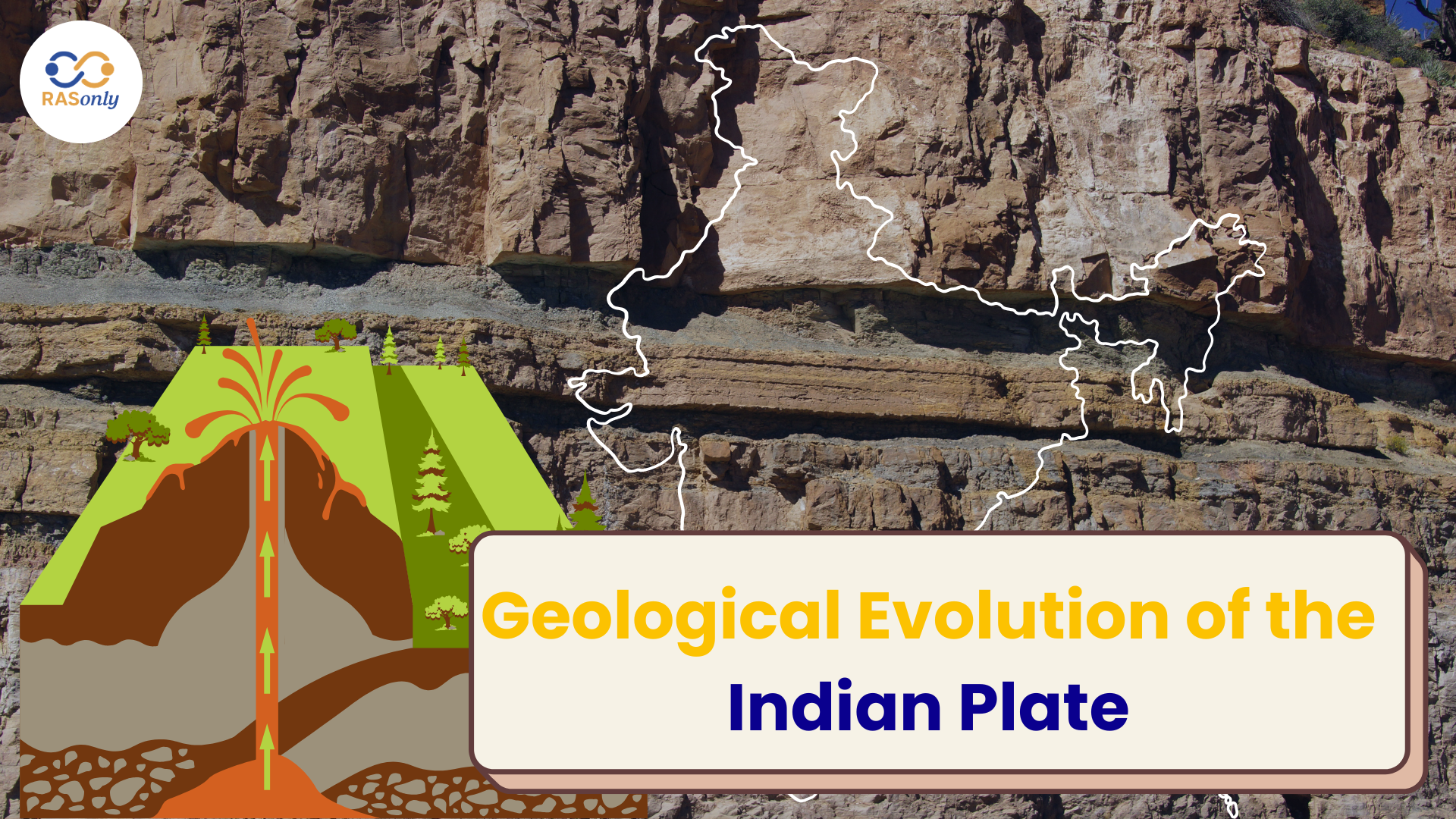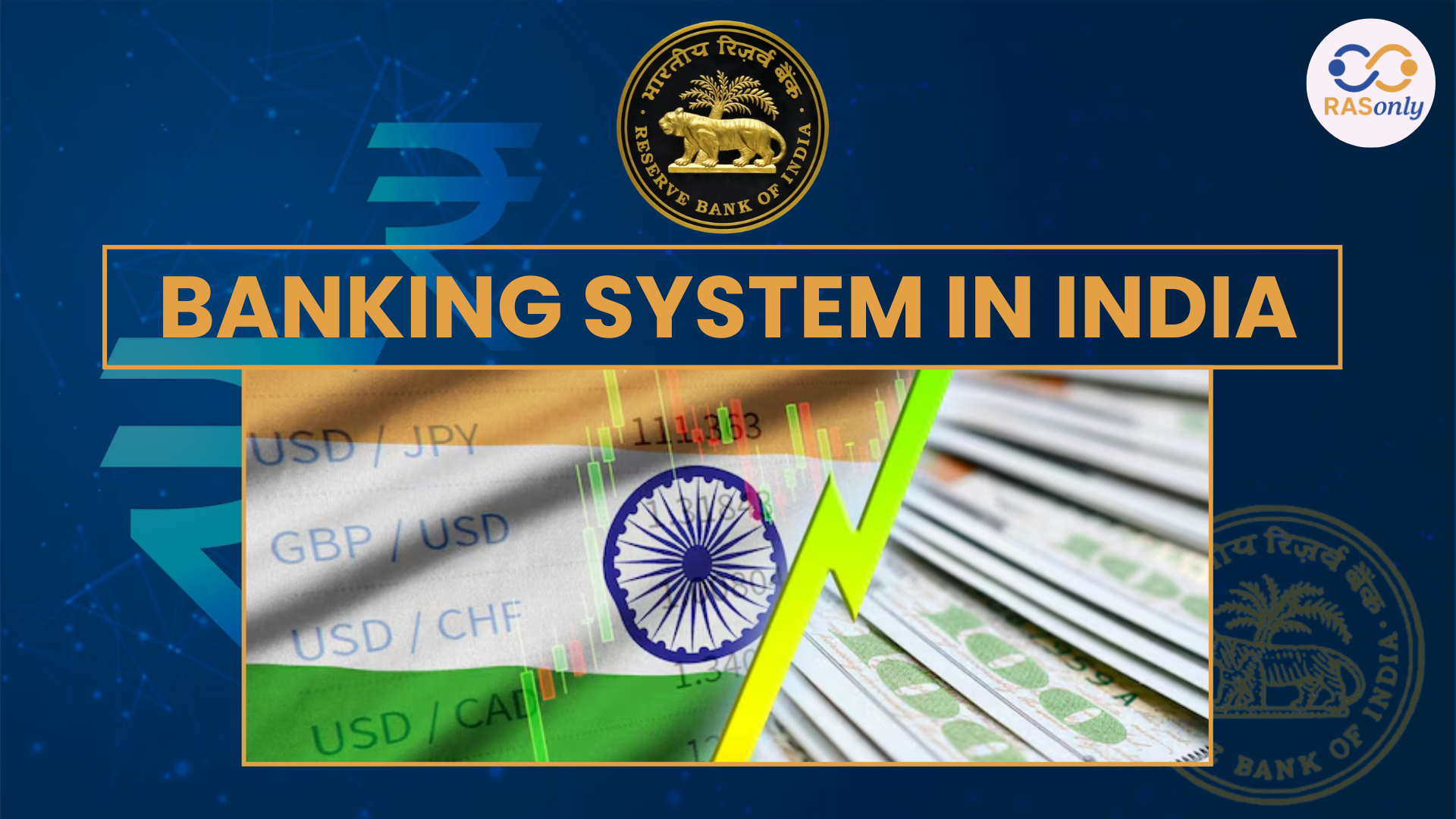How to Revise the Entire Syllabus Before the RAS Exam: A Complete Guide
- >
- RAS Preparation Resources
- >
- The Evolution of the Indian Plate: From an Island to the Himalayas
The Evolution of the Indian Plate: From an Island to the Himalayas


Sea floor spreading and plate tectonics concepts transformed the perception of the geology of the earth because they explain the movement and formation of oceanic crust, the subdivision of the earth lithosphere into plates, and what happens during plate boundaries. The plate collision of the Indian plate with the plate Asia plate is the reason behind the formation of the Himalaya that is determined by the dynamic aspect of the surface of the earth.
Sea Floor Spreading : Dynamics of the Indian Plate
- What is Sea Floor Spreading?
- The process of formation of new oceanic crust at mid-ocean ridges as a result of volcanic activities is called sea floor spreading.
- When the magma flows up to the surface and solidifies, a new crust is created and flows away the ridge pushing aside the older crust.
- Theory and Genesis:
- Harry Hess came up with the theory in 1961 in order to explain the process by which drift in the continents occurred.
- It is the crucial segment of the theory of plate tectonics, which reveals the process of expanding ocean basins with time.
- Working Mechanism
- At the summit of mid-ocean ridges the volcanic outpours crack up the present crust.
- This makes the oceanic plates separate and drifts apart creating new crust between them.
- As the new crust cools and becomes hard it moves away in a gradual processions adjacent to the ridge.
- Role played by Indian plate:
- The Indian plate is an active player in this game.
- Because of the spreading of the seafloor in the Indian Ocean, it is being moved northwards where it has hit against the Eurasian plate (creating the Himalayas).
- This theory is supported by formation of the relatively young oceanic crust in the Indian ocean.
- Subduction Zones:
- When the new crust is generated along the ridges, the older crust is progressively being engulfed in the oceanic trenches (otherwise known as the subduction zoning).
- In this process, the ocean bed slips back into the mantle and thus ensures balance on the planet.
Plate Tectonics
- What is plate tectonic?
- The plate tectonics theory, which was developed in 1967 by McKenzie, Parker, and Morgan, theorizes how the earth outer crust has been broken into a number of big rigid plates.
- Movement Mechanism:
- The plates are afloat on a more fluid zone or middle part of the upper mantle, the asthenosphere.
- The plates in oceans are about 100 km and the plates in the continents are approximately 200 km in their thicknesses.
- The movement is typically horizontal, which produces earthquakes, volcanic activities and mountain building.
- The role of Indian Plate:
- The Indian Plate is among the major tectonic plates.
- It causes significant geological activities like elevation of Himalaya mountains, earthquakes along the area and ridge activity on the ocean.
Major Plates: Exploring Earth’s Tectonic Plates
- Antarctica Plate: Including surrounding oceanic plates
- North American Plate
- South American Plate
- Pacific Plate
- India-Australia-New Zealand Plate
- African Plate
- Eurasian Plate: Covering Eurasia and adjacent oceanic areas
Minor Plates: Understanding the Smaller Tectonic Plates
- Cocos Plate: Between Central America and the Pacific Plate
- Nazca Plate: Between South America and the Pacific Plate
- Arabian Plate: Comprised of the Saudi Arabian landmass
- Philippine Plate: Positioned between the Asiatic and Pacific Plates
- Caroline Plate: Between the Philippine and Indian Plates
- Fuji Plate: Northeast of Australia
Types of Plate Boundaries
- Divergent Boundaries: As the plates move, a new crust is formed.
- Example: Mid-Atlantic Ridge at separation of American and Eurasian and African Plates
- Convergent Boundaries: Destruction of crust- one plate is moved downwards relative to the other.
- Example: like earthquakes in Nepal were caused by subduction zones and this results in formation of mountain ranges such as the Himalayas.
- Transform Boundaries: The sliding of the plates one over another causes neither the creation nor the destruction of crust.
- Example: Mid-ocean ridges transform errors which are affected by the rotation of the earth.
Movement of the Indian Plate
- Rates of Plate Movements
- Plate movements such as the Indian Plate are monitored by the magnetic strips on the seafloor.
- The plates move with varying speeds: the Arctic Ridge is slow (slower than 2.5 cm/year) and the East Pacific Rise is faster (more than 15 cm/year).
- Driving Forces of the Plate Movement
- The mantle of the earth flows in the form of convection cells and this drives the lithospheric plates.
- The heat is as a result of radioactive decay and remnant heat on the earth.
- Arthur Holmes proposed that the motion of the mantle under the plates in the hypothesis of the sea floor spreading in which Harry Hess expanded upon.
Geographical Structure and Borders of Indian Plate
The Indian Plate extends to Peninsula India and some areas to the Australian continent.
- Northern Boundary: The Himalayas, continent-continent convergence, a subduction zone.
- Eastern Boundary: Runs all the way through the Rakinyoma Mountains of Myanmar towards an island arc at the Java Trench.
- Western Boundary: It is through Kirthar Mountains in Pakistan and Makrana Coast.
- Southern Boundary: Oceanic ridge between the Indian and Antarctic Plates is there and forms a divergent boundary.
Position of plates through historical time
- At the height of 225 million years, India was an island on the coast of Tethys Sea, close to Australia.
- The Indian plate started moving towards the north with the breaking up of the Pangaea about 200 million years ago.
- The crash of the Indian and Asian plates took a span of 40-50 million years ago and caused the Himalayas to rise.
Transformation of Geography
- The Indian subcontinent was as far south as 50 o latitude, 140 million years ago.
- The Indian plate was moved, and about 60 million years ago, volcanic eruptions were done to form Deccan Traps.
- By 40 million years ago the Himalayas began to form, as the Indian Plate traveled towards the equator.
Structural changes
- today where the collision of the Indian Plate with the Eurasian Plate still persists which means that the Himalayas are still being formed.
- The process of the formation of the Himalayas is not a state of affairs, but a dynamical process, which still forms the face of the area.
Conclusion
The development of the Indian plate has developed over a long period, and a dynamic one as well, having come up as a single isolated island to join in collision with the Asian Plate and resulting in the Himalayas. The sea floor spreading and plate tectonics can also contribute to the comprehension of this exciting geological history revealing the forces that create the surface of the planet.
Post Category
- RAS Salary
- Result
- RAS Admit Card
- RAS Job
- RAS Cutoff
- Preparation Tips
- RAS Answer Key
- RAS Exam Analysis
- RAS Syllabus
- RAS Previous Year Papers
- RPSC RAS Exam Pattern
- RAS Interview
- RAS Mains Exam Date
- RAS Vacancy
- RAS Test Series
- RAS Best Books
- RAS Preparation Resources
- RAS Coaching Centre
- History
- Polity
- Geography
- Economics
- Science
- Art and Culture
- RPSC RAS Application Form
RASonly Interview Guidance Program

Mr. Ashok Jain
Ex-Chief Secretary Govt of Rajasthan
- IAS officer of the 1981 batch, Rajasthan cadre.
- Passionate about mentoring the next generation of RAS officers with real-world insights.
- Got retired in Dec 2017 from the post of Chief Secretary of the state of Rajasthan.

Mr. Guru Charan Rai
Ex-ASP / SP in Jaisalmer
- Guru Charan Rai, IPS (Retd), retired as Inspector General of Police (Security), Rajasthan, Jaipur in 2017.
- Served as ASP and SP in Jaisalmer, Nagaur, Sri Ganganagar, Sawai Madhopur, Dausa, Sikar, and Karauli.
- He also held key positions as DIGP and IGP in the Law and Order division.

Mr. Rakesh Verma
Ex-IAS Officer, B.Tech, MBA, and M.A. (Economics)
- IAS officer of the 1981 batch and retired in Chief Secretary Rank.
- Civil servant of high repute and vast experience.
- Has been teaching UPSC CSE subjects for the last six years.
Related Post
👉🏻 Register Today to Join Classes! 👍🏻
- Team RASOnly -
🎯 Benefits of RASOnly Coaching:
- ✅ 1:1 Mentorship with RAS Officers
- ✅ Experienced and Expert Faculty
- ✅ Free Library Access
- ✅ Daily Minimum 4 Hours Must
- ✅ Comprehensive Study Material
- ✅ Regular Tests & Performance Analysis
- ✅ Personalized Guidance & Doubt Solving
- ✅ Online & Offline Class Options
- ✅ Affordable Fees with Quality Education
Key Highlights:
- 👉🏻 3-Day Refund Policy
- 👉🏻 New Batch Starting from 04 August
- 👉🏻 Registration Amount: Only ₹1000





